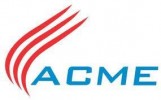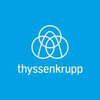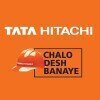


i
Nibav Lifts
Filter interviews by
Nibav Lifts Senior .NET Developer Interview Questions and Answers
Nibav Lifts Senior .NET Developer Interview Experiences
1 interview found
I appeared for an interview before Apr 2023.
(2 Questions)
- Q1. Stored procedure vs f unctions
- Ans.
Stored procedures are precompiled SQL queries stored in the database, while functions are reusable blocks of code that return a value.
Stored procedures are compiled and stored in the database for faster execution.
Functions are reusable blocks of code that can be called within SQL queries.
Stored procedures can perform multiple operations and transactions, while functions are typically used for calculations or data manip...
- Q2. How to store two values in same html tag
- Ans.
Use data attributes to store multiple values in the same HTML tag
Use data attributes like data-value1 and data-value2 to store two values in the same HTML tag
Access the values using JavaScript by querying the data attributes
Interview Preparation Tips
Skills evaluated in this interview
Top trending discussions






Interview questions from similar companies

Senior Engineer Interview Questions & Answers
Sigma Electric Manufacturing Corporationposted on 10 May 2018
I applied via Company Website and was interviewed in Jan 2018. There were 2 interview rounds.
Interview Preparation Tips
Experience: technical round
no. of questions 30
Round: Test
Experience: Questions related to NPD
no. of questions 10
Round: Test
Experience: VP Round
all questions reated to job 10
Round: Test
Experience: HR round ..
General Tips: Know the JD before interview
Skills: Communication, Body Language, Decision Making Skills
Duration: 1-4 weeks

I applied via Naukri.com and was interviewed before May 2020. There was 1 interview round.
Interview Questionnaire
1 Question
- Q1. Write the equation for dynamics and wave spectra equations. I do not remember questions as it is 3 years back.
Interview Preparation Tips

Senior Engineer Interview Questions & Answers
Acme Cleantech Solutionsposted on 22 Mar 2021
Interview Questionnaire
2 Questions
- Q1. Technical questions
- Q2. Work remote location. Projected site
Interview Preparation Tips

I applied via Referral and was interviewed in Nov 2023. There were 3 interview rounds.

(1 Question)
- Q1. What is your highest qualification
- Ans.
My highest qualification is a Master's degree in Electrical Engineering.
Master's degree in Electrical Engineering
Specialized in power systems
Thesis focused on renewable energy integration
Completed advanced courses in control systems
Published research papers in IEEE conferences
(1 Question)
- Q1. What is your role and responsibilities in the project quality?
- Ans.
As a Senior Engineer, my role in project quality is to ensure that all deliverables meet the required standards and specifications.
Developing and implementing quality assurance processes and procedures
Conducting regular audits and inspections to identify any quality issues
Collaborating with cross-functional teams to address and resolve quality concerns
Creating and maintaining quality documentation, including test plans...

Senior Engineer Interview Questions & Answers
Wipro Infrastructure Engineeringposted on 4 Sep 2021
I applied via Recruitment Consultant and was interviewed in Mar 2021. There were 3 interview rounds.
Interview Questionnaire
4 Questions
- Q1. How types of welding?
- Ans.
There are several types of welding including MIG, TIG, Stick, and Flux-Cored welding.
MIG welding uses a wire electrode and a shielding gas to join two pieces of metal together.
TIG welding uses a tungsten electrode and a filler metal to create a strong weld.
Stick welding uses a consumable electrode coated in flux to create a strong bond.
Flux-Cored welding uses a wire electrode with a flux core to create a protective shi
- Q2. Difference b/w 1st angle & 3rd angle projection?
- Ans.
1st angle projection is used in Europe & 3rd angle projection is used in North America. They differ in placement of views.
1st angle projection places the object in front of the viewing plane while 3rd angle projection places the object behind the viewing plane.
In 1st angle projection, the top view is placed below the front view while in 3rd angle projection, the top view is placed above the front view.
1st angle project...
- Q3. Why u are leaving your past company
- Q4. What is meant by six sigma
- Ans.
Six Sigma is a data-driven methodology used to improve business processes by reducing defects and variability.
Six Sigma aims to achieve a level of quality where the probability of defects is extremely low.
It involves a structured approach to problem-solving using statistical analysis.
The methodology uses a set of tools and techniques such as DMAIC (Define, Measure, Analyze, Improve, Control) and statistical process con...
Interview Preparation Tips

Senior Engineer Interview Questions & Answers
Wipro Infrastructure Engineeringposted on 27 Oct 2021
I applied via Naukri.com and was interviewed in Sep 2021. There were 3 interview rounds.
Interview Questionnaire
2 Questions
- Q1. About previous experience
- Q2. Previous experience
Interview Preparation Tips

(2 Questions)
- Q1. What is pressure vessel
- Ans.
A pressure vessel is a container designed to hold gases or liquids at a pressure substantially different from the ambient pressure.
Pressure vessels are used in various industries such as oil and gas, chemical, pharmaceutical, and food processing.
They are designed to withstand high pressures and are typically cylindrical or spherical in shape.
Examples include boilers, storage tanks, and compressed air tanks.
- Q2. How to design shell
- Ans.
Designing a shell involves considering factors like material, shape, size, and functionality.
Consider the material of the shell - metal, plastic, or composite
Determine the shape of the shell based on the intended use - cylindrical, spherical, conical, etc.
Decide on the size of the shell to accommodate the contents it will hold
Design the shell with the necessary functionality in mind - openings, closures, ventilation, e
Skills evaluated in this interview

Software Developer Interview Questions & Answers
Wipro Infrastructure Engineeringposted on 15 Oct 2022
I applied via Company Website and was interviewed in Sep 2022. There were 2 interview rounds.
(28 Questions)
- Q1. Introduced my self in 1st question
- Ans. Good evening, respected sir/mam Thank you for giving me this opportunity to introduce myself, my name is Pooja Najan,I am form Shevgoan, dist. A. Nagar. I am currently teaching in engineering of computer diploma 3rd year continue, my hobbies are Reading, writting and playing computer games, I would like to become a software engineer in my life and I am fresher. I belong to middle class family. There are 6 members in my...
- Q2. What is c language? What is keyword in c language?
- Ans.
C language is a high-level programming language used for developing software. Keywords are reserved words with predefined meanings.
C language is a general-purpose programming language.
It was developed in the early 1970s by Dennis Ritchie.
C language is widely used for system programming and embedded systems.
Keywords in C language cannot be used as variable names or identifiers.
Examples of keywords in C language include ...
- Q3. What is data type in c language
- Ans.
Data type in C language defines the type of data that a variable can hold.
C language has built-in data types like int, float, char, etc.
Data types determine the size and layout of variables in memory.
They also define the operations that can be performed on the variables.
For example, int can store whole numbers, float can store decimal numbers, and char can store single characters.
- Q4. What is Array, pointer in c language
- Ans.
An array is a collection of elements of the same data type, stored in contiguous memory locations. A pointer is a variable that stores the memory address of another variable.
Arrays allow storing multiple values of the same type in a single variable.
Pointers are used to store memory addresses and can be used to access and manipulate data indirectly.
Example: int arr[5]; // declares an array of integers with 5 elements
Exa...
- Q5. What is operator ?And it's type of operator.
- Ans.
An operator is a symbol or keyword used to perform operations on operands in a programming language.
Operators are used to manipulate data and perform calculations.
There are different types of operators such as arithmetic, assignment, comparison, logical, etc.
Examples of operators include + (addition), = (assignment), == (equality), && (logical AND), etc.
- Q6. Syntax of c language?
- Ans.
The syntax of the C programming language is a set of rules that dictate how programs written in C should be structured and formatted.
C programs are written using a combination of keywords, identifiers, operators, and punctuation marks.
Statements in C are terminated with a semicolon (;).
Blocks of code are enclosed within curly braces ({ }).
Variables must be declared before they can be used, specifying their data type.
Fu...
- Q7. What is string in c language
- Ans.
A string in C language is a sequence of characters stored in an array.
Strings in C are represented as arrays of characters.
They are terminated by a null character '\0'.
Strings can be manipulated using various string functions like strcpy, strcat, etc.
- Q8. Syntax of string in c language
- Ans.
The syntax of a string in the C language is a sequence of characters enclosed in double quotes.
Strings in C are represented as arrays of characters.
Strings are null-terminated, meaning they end with a null character '\0'.
String literals can be assigned to char arrays or pointers.
String manipulation functions like strcpy, strcat, strlen, etc., are used to work with strings.
- Q9. Different between calloc()and malloc()
- Ans.
calloc() and malloc() are both used for dynamic memory allocation in C, but calloc() also initializes the allocated memory to zero.
calloc() allocates memory for an array of elements and initializes them to zero.
malloc() only allocates memory for the specified number of bytes.
calloc() is useful when initializing arrays or structures.
malloc() is useful when allocating memory for a single variable or a dynamically sized a
- Q10. Can I compile c program without main ()
- Ans.
Yes, it is possible to compile a C program without main().
A C program must have a main() function as the entry point.
However, it is possible to compile a C program without a main() function using a different entry point.
This can be achieved by defining a different entry point using linker options or compiler-specific attributes.
For example, in some embedded systems, the entry point may be defined as _start() instead of
- Q11. What is nested structure?
- Ans.
Nested structure refers to a structure within another structure in programming.
It allows organizing data in a hierarchical manner.
Nested structures can be used to represent complex relationships between data.
They can be implemented using classes, structs, or objects in various programming languages.
Example: A structure representing a person can have a nested structure representing their address.
- Q12. What is a preprocesser?
- Ans.
A preprocessor is a program or tool that processes source code before it is compiled or interpreted.
Preprocessors are commonly used in programming languages like C and C++.
They perform tasks such as macro expansion, file inclusion, and conditional compilation.
Examples of preprocessors include the C preprocessor (cpp) and the C++ preprocessor (cpp).
- Q13. What is the use of printf() and scanf ()?
- Ans.
printf() is used to print formatted output to the console, while scanf() is used to read formatted input from the console.
printf() is used to display output on the console, allowing for formatting options like specifying the number of decimal places or padding with leading zeros.
scanf() is used to read input from the console, allowing for formatting options like reading integers, floats, or strings.
Both functions are p...
- Q14. What is /0 character?
- Ans.
The /0 character, also known as the null character, is a control character used to indicate the end of a string in C-based languages.
It has a value of zero and is represented as '\0' in C-based languages.
It is used to terminate strings and is typically placed at the end of a character array.
When encountered, it signals the end of the string and any characters after it are ignored.
- Q15. How is Function declared in c language?
- Ans.
A function in C is declared by specifying the return type, function name, and parameters (if any).
The return type specifies the type of value the function will return.
The function name is used to call the function.
Parameters are optional and specify the input values the function expects.
Function declaration ends with a semicolon.
- Q16. What is Dynamic Memory Allocation? Mention it's syntax.
- Ans.
Dynamic Memory Allocation is the process of allocating memory at runtime for storing data.
Dynamic Memory Allocation allows programs to allocate memory as needed during runtime.
It helps in managing memory efficiently by allocating and deallocating memory as required.
The syntax for dynamic memory allocation in C is using the 'malloc' function to allocate memory and 'free' function to deallocate memory.
Example: char* str ...
- Q17. Write an example for structure in c language.
- Ans.
A structure in C is a user-defined data type that allows you to combine different types of variables under a single name.
Structures are used to represent real-world entities or concepts in programming.
They can contain variables of different data types, including other structures.
Structures provide a way to organize related data and improve code readability and maintainability.
You can access the members of a structure u...
- Q18. Can I create customized header file in C ?
- Ans.
Yes, you can create customized header files in C.
Customized header files in C are used to declare functions, variables, and macros that can be used across multiple source files.
To create a customized header file, you can use the .h extension and include it in your C program using the #include directive.
The header file should contain function prototypes, type definitions, and macro definitions.
You can also include other...
- Q19. What do you mean by Memory Leak?
- Ans.
Memory leak is a situation where a program fails to release memory that is no longer needed, leading to memory exhaustion.
Memory leak occurs when dynamically allocated memory is not deallocated properly.
It can happen when a program loses the reference to allocated memory without freeing it.
Memory leaks can gradually consume all available memory, causing the program to crash or slow down.
Common causes include forgetting...
- Q20. Static Local Variable and what is there is use?
- Ans.
Static local variables are variables declared inside a function that retain their value between function calls.
Static local variables are initialized only once, and their value persists across multiple function calls.
They are useful for maintaining state information within a function.
Static local variables have a local scope and are not accessible outside the function.
They can be used to count the number of times a fun...
- Q21. What is statement is efficient and why? X=X+1/X++?
- Ans.
The statement X=X+1/X++ is not efficient.
The use of post-increment operator (X++) can lead to unpredictable behavior and make the code harder to understand.
The division operation (1/X) can result in a runtime error if X is 0.
The statement can be rewritten in a more efficient and readable way.
- Q22. What is typecasting?
- Ans.
Typecasting is the process of converting one data type into another in programming.
Typecasting allows programmers to change the data type of a variable.
It can be done implicitly or explicitly.
Implicit typecasting is automatic and occurs when a value of one data type is assigned to a variable of another data type.
Explicit typecasting is done manually using casting operators.
Examples of typecasting include converting an
- Q23. C program to hello world
- Ans.
A C program to print 'Hello, World!'
Use the 'printf' function from the 'stdio.h' library to print the message
Include the 'stdio.h' header file at the beginning of the program
Use the 'int' return type for the main function
End the program with a 'return 0' statement
- Q24. Features of C language?
- Ans.
C is a powerful and widely used programming language known for its efficiency and low-level control.
C is a procedural language with a simple syntax and a rich set of built-in functions.
It allows direct memory manipulation and provides low-level access to hardware.
C supports modular programming with the use of functions and libraries.
It is highly portable and can be used to develop software for various platforms.
C is co...
- Q25. What is the oops Concept?
- Ans.
OOPs is a programming paradigm based on the concept of objects that interact with each other.
OOPs stands for Object-Oriented Programming.
It focuses on creating objects that have properties and methods to interact with each other.
Encapsulation, Inheritance, Polymorphism, and Abstraction are the four main pillars of OOPs.
Examples of OOPs languages are Java, C++, Python, etc.
- Q26. What is the polymorphisam?
- Ans.
Polymorphism is the ability of an object to take on many forms.
Polymorphism allows objects of different classes to be treated as if they are of the same class.
It is achieved through method overriding and method overloading.
Example: A parent class Animal can have child classes like Dog, Cat, and Cow, each with their own implementation of the method 'makeSound'.
Polymorphism makes code more flexible and reusable.
- Q27. What is encapsulation?
- Ans.
Encapsulation is the process of hiding implementation details and restricting access to an object's properties and methods.
Encapsulation helps in achieving data abstraction and security.
It allows for better control over the data and prevents unwanted changes.
Access to the object's properties and methods is restricted through access modifiers such as public, private, and protected.
For example, a class may have private v...
- Q28. What is the abstraction?
- Ans.
Abstraction is the process of hiding complex implementation details and exposing only the necessary information.
Abstraction is a fundamental concept in object-oriented programming.
It helps in reducing complexity and improving the maintainability of code.
Abstraction can be achieved through interfaces, abstract classes, and encapsulation.
For example, a car can be abstracted as a machine with wheels, engine, and steering.
...
(8 Questions)
- Q1. What is the polymorphisam?
- Ans.
Polymorphism is the ability of an object to take on many forms.
Polymorphism allows objects of different classes to be treated as if they are of the same class.
It is achieved through method overriding and method overloading.
Examples include function overloading, operator overloading, and inheritance.
Polymorphism helps in achieving loose coupling and flexibility in code design.
- Q2. Basic concept of the c language
- Q3. Basic concept of the Oops?
- Ans.
OOPs stands for Object-Oriented Programming. It is a programming paradigm based on the concept of objects.
OOPs focuses on creating reusable code and organizing it into objects.
It involves encapsulation, inheritance, and polymorphism.
Encapsulation is the process of hiding implementation details and exposing only necessary information.
Inheritance allows a class to inherit properties and methods from another class.
Polymor...
- Q4. What is operating system?
- Ans.
An operating system is a software that manages computer hardware and software resources.
It acts as an interface between the user and the computer hardware.
It provides services such as memory management, process management, and device management.
Examples include Windows, macOS, Linux, and Android.
It allows multiple applications to run simultaneously.
It provides security features such as user authentication and access co
- Q5. What is access matrix?
- Ans.
Access matrix is a security model that defines access rights of subjects to objects.
Access matrix is a table that lists all subjects and objects and their corresponding access rights.
It is used to control access to resources in a computer system.
Access matrix can be implemented using access control lists (ACLs) or capabilities.
It helps in enforcing the principle of least privilege.
Example: A user can have read-only acc...
- Q6. What is real -time system?
- Ans.
Real-time system is a computer system that processes data as it is received and provides immediate response.
Real-time systems are used in applications where timely response is critical.
They are designed to process data in real-time without any delay.
Examples include air traffic control systems, stock trading systems, and medical monitoring systems.
- Q7. What is multi_programming?
- Ans.
Multi-programming is the ability of a computer to execute multiple programs simultaneously.
Allows for efficient use of CPU time
Requires memory management techniques such as swapping and paging
Examples include time-sharing systems and batch processing systems
- Q8. What is multi -tasking?
- Ans.
Multitasking is the ability of a system to perform multiple tasks simultaneously.
Multitasking allows a system to switch between tasks quickly and efficiently.
It can be achieved through hardware or software.
Examples include running multiple applications on a computer or phone, or listening to music while working on a document.
Multitasking can improve productivity and efficiency, but can also lead to decreased performanc
Interview Preparation Tips
- C ,operating system
- C++
So thank you for this, That's all about me.
Thank you again..... 🙏🙏
Skills evaluated in this interview


(2 Questions)
- Q1. Based on the experiences and technical information provided in resume
- Q2. Based on the standards mentioned in resume regarding oil and gas
Interview Preparation Tips
Nibav Lifts Interview FAQs
Tell us how to improve this page.
Nibav Lifts Interviews By Designations
- Nibav Lifts Business Development Manager Interview Questions
- Nibav Lifts HR Executive Interview Questions
- Nibav Lifts CRM Executive Interview Questions
- Nibav Lifts Salesforce Administrator Interview Questions
- Nibav Lifts Operations Executive Interview Questions
- Nibav Lifts Quality Analyst Interview Questions
- Nibav Lifts Regional Manager Interview Questions
- Nibav Lifts Sales Executive Interview Questions
- Show more
Interview Questions for Popular Designations
- DOT NET Developer Interview Questions
- Software Developer Interview Questions
- Junior .NET Developer Interview Questions
- Java Developer Interview Questions
- .NET Software Developer Interview Questions
- Senior Software Developer Interview Questions
- Full Stack Developer Interview Questions
- Node JS Developer Interview Questions
- Show more
Nibav Lifts Senior .NET Developer Interview Process
based on 1 interview
Interview experience
Interview Questions from Similar Companies
Nibav Lifts Senior .NET Developer Reviews and Ratings
based on 1 review
Rating in categories
|
Business Development Manager
225
salaries
| ₹5.4 L/yr - ₹9.6 L/yr |
|
Regional Manager
42
salaries
| ₹6 L/yr - ₹16.5 L/yr |
|
HR Executive
33
salaries
| ₹2.4 L/yr - ₹4.9 L/yr |
|
Regional Sales Manager
21
salaries
| ₹7 L/yr - ₹13.1 L/yr |
|
Full Stack Developer
20
salaries
| ₹3.6 L/yr - ₹9 L/yr |

TechnipFMC

TKIL

Wipro Infrastructure Engineering

TÜV SÜD
- Home >
- Interviews >
- Nibav Lifts Interview Questions >
- Nibav Lifts Senior .NET Developer Interview Questions







